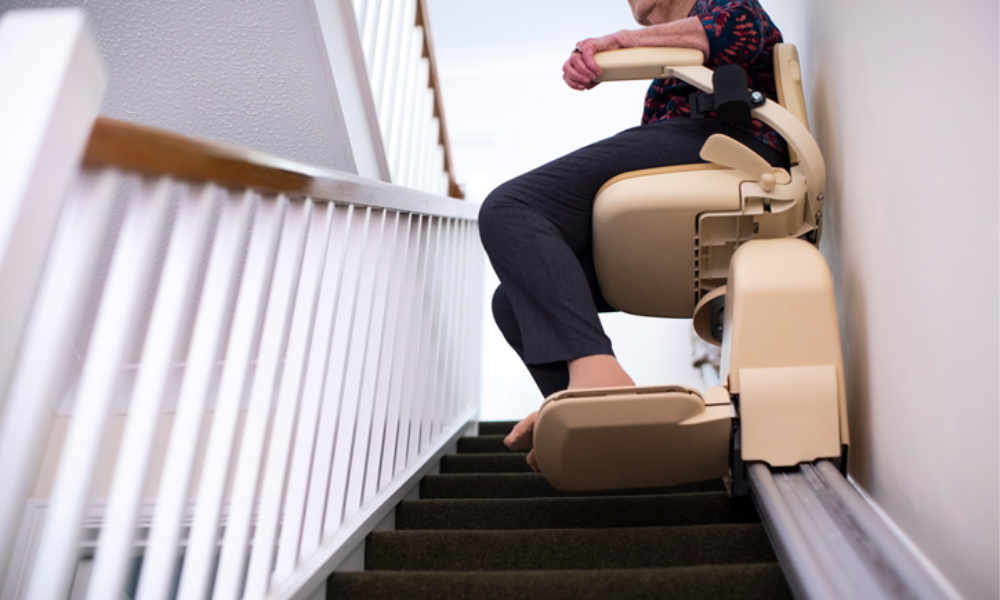Mobile Stairlifts: Enhancing Mobility and Independence at Home
Mobile stairlifts represent a significant advancement in accessibility technology, offering flexible solutions for individuals with mobility challenges. Unlike permanent stairlift installations, these portable devices can be moved between locations, providing convenience and adaptability for various living situations. Mobile stairlifts combine the functionality of traditional stairlifts with the advantage of portability, making them valuable options for both temporary mobility needs and homes where permanent installations aren't feasible or desired.

How Mobile Stairlifts Work and Their Key Features
Mobile stairlifts operate on a different principle than fixed stairlifts. Instead of running along a rail mounted to the staircase, these portable units typically feature a motorized platform or chair with specialized treads or wheels designed to navigate stairs safely. Most models include a sturdy frame with handles, battery-powered motors, and safety features such as automatic braking systems and secure harnesses. The operator—usually a caregiver—guides the stairlift while the motor provides the power needed to ascend or descend stairs. Modern mobile stairlifts often include rechargeable batteries that can last through multiple trips before requiring recharging, along with lightweight yet durable materials that balance portability with safety.
Benefits of Small Platform Lifts for Home Accessibility
Small platform lifts offer a distinct advantage for homes with limited space, serving as compact accessibility solutions that don’t require extensive modifications to the property. These devices, which include mobile stairlifts with platforms rather than seats, provide support for individuals who cannot easily transfer to a chair or who use mobility aids like wheelchairs. The platform design accommodates users in standing or seated positions, making them versatile for various mobility needs. Additionally, small platform lifts can often be folded when not in use, minimizing their footprint in the home. Their adaptability makes them particularly valuable for multi-level residences where accessibility needs vary by floor or for homes with unique staircase configurations that might challenge traditional stairlift installations.
Easy Climber Elevator: An Alternative to Traditional Stairlifts
The Easy Climber Elevator represents a different approach to home mobility challenges, functioning as a compact residential elevator rather than a stairlift. These systems provide vertical transportation between floors without requiring users to transfer to a different seat or leave their mobility aids behind. Unlike mobile stairlifts, Easy Climber Elevators require permanent installation but offer a more comprehensive solution for individuals with significant mobility limitations. These systems typically accommodate wheelchairs and walking aids, allowing users to travel between floors with minimal assistance. Though more expensive than mobile stairlifts, Easy Climber Elevators provide long-term accessibility that may better serve individuals with permanent mobility needs or those planning to age in place over many years.
Comparing Mobile Stairlifts with Permanent Solutions
When considering accessibility options, understanding the differences between mobile and permanent stairlifts helps in making informed decisions based on individual needs. Mobile stairlifts shine in situations requiring flexibility, temporary use, or where installation of permanent fixtures isn’t possible. Meanwhile, permanent stairlifts like those from Stannah offer stability and independence, allowing users to operate them without assistance. The decision between these options often depends on factors including the user’s physical capabilities, the presence of caregivers, budget considerations, and whether the mobility need is temporary or permanent.
Understanding Stannah Stairlift Videos and Their Importance
Stannah Stairlift videos serve as valuable educational resources for consumers researching mobility solutions. These videos typically demonstrate the operation, features, and installation process of various Stannah stairlift models, helping potential users visualize how these systems would function in their own homes. Watching these demonstrations can provide insights into how users transfer onto the seat, operate the controls, and navigate turns on staircases. While Stannah primarily produces permanent stairlift installations rather than mobile options, understanding their product videos provides a useful comparison point when evaluating mobile alternatives. Many healthcare professionals recommend viewing such videos as part of the research process when considering any type of stairlift purchase.
Mobile Stairlift Providers and Cost Comparison
The market for mobile stairlifts includes several providers offering various models with different features and price points. Understanding these options helps consumers make informed decisions based on their specific needs and budget constraints.
| Provider | Product | Key Features | Estimated Cost |
|---|---|---|---|
| Scalamobil | Portable Stair Climber | Caregiver-operated, works on spiral stairs, rechargeable battery | $4,000-$6,000 |
| EZ-Access | PAWS Portable Stair Lift | Lightweight aluminum construction, 375 lb capacity, foldable design | $3,500-$5,000 |
| AAT | C-Max Stair Climber | Single-operator system, works on wooden/carpet stairs, safety brakes | $5,000-$7,500 |
| Garaventa Lift | Super-Trac | Heavy-duty design for wheelchair users, indoor/outdoor capability | $7,000-$10,000 |
Prices, rates, or cost estimates mentioned in this article are based on the latest available information but may change over time. Independent research is advised before making financial decisions.
Making the Right Choice for Your Mobility Needs
Selecting the appropriate mobility solution requires careful consideration of individual circumstances and needs. Mobile stairlifts offer flexibility and portability but typically require caregiver assistance for operation. Small platform lifts provide support for those who cannot easily transfer to seated positions. The Easy Climber Elevator offers a permanent solution with independent operation but at a higher cost and installation commitment. Researching options thoroughly, including watching demonstration videos like those produced by Stannah, helps in understanding the practical implications of each choice. Many mobility specialists recommend in-home assessments to determine which solution best addresses the specific architectural challenges and user requirements of each situation. By evaluating these factors—along with budget considerations and long-term mobility projections—individuals and families can select the most appropriate solution for their unique circumstances.




